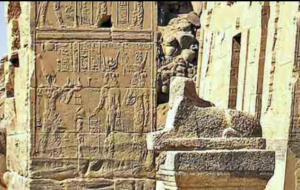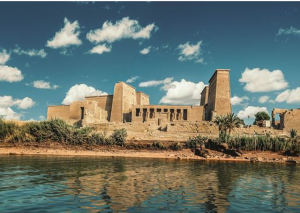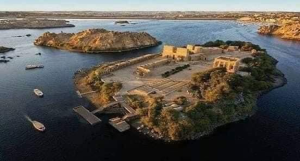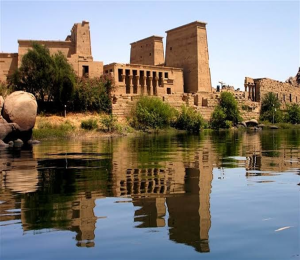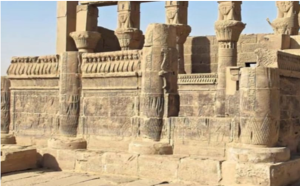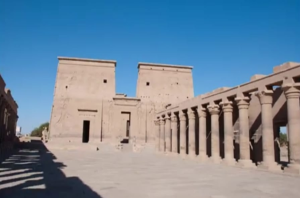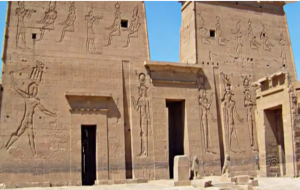Philae Island
Philae Island is located in the middle of the Nile River in the city of Aswan. It was one of the strong fortresses in ancient Egyptian times. Therefore, it was known as the Fortress of the South (Hut-Khent). It was also known as the Sacred Tomb or the Sacred Island because, according to the Osirian myth, it is said that the last thing Isis found of the pillar of the grandfather (Osiris’ spine) was found on that island, thus making it a sacred island. The Coptic name is Bilak, which means the limit or the end. This name was transformed in the Greek language into Philae or Philai, which means the beloved. As for the Arabic name of the island, it is (Ans al-Wujud), due to the existence of the legend of Ans al-Wujud in the ‘Thousand- and One-Nights’ famous book.
The Legend of Ans al-Wujud
‘Ans al-Wujud’ was name of a poor young man who loved the daughter of a prince named Zahrat al-Ward (Flower of the Rose). The girl loved him deeply. When her father found out, he objected and sent her to the Temple of Isis on this island to live far from her poor lover. But Ans al-Wujud was a kind young man and he kept searching for her and asking people about her until he knew her whereabouts. The legend says that he used a large crocodile and rode on its back to reach the island. When he arrived at the island, he met his beloved and freed her from her prison and returned with her to the city. Her father’s heart softened and he agreed to their marriage.
Saving the Antiquities of Philae Island
The original Philae Island was home to the temples of the goddess Isis and the goddess Hathor. However, when the High Dam was built, the island’s temples were submerged underwater. The Egyptian government sought the assistance of UNESCO to save these great antiquities. The project to rescue the antiquities of Philae Island was implemented and continued for ten years, from 1970 to 1980. Initially, engineers built a large dam around Philae Island, then removed the water using powerful pumps. After that, the entire temple was moved piece by piece to a higher ground on Agilkia Island. Then, they reassembled the pieces of stone to appear in their original form before submersion. Agilkia Island (where the temple is now located) is about 500 meters away from Philae Island.
General View of the Temples of Philae Island
A general view of Agilkia Island, where the antiquities of Philae Island were relocated after the construction of the High Dam.
A view representing the beauty of the temples of Philae Island.
The Last Hieroglyphic Writing and Demotic Text
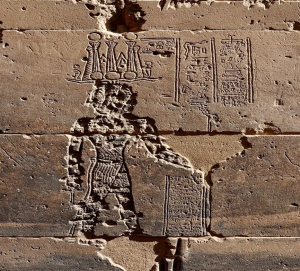 Temples of Philae Island
Temples of Philae Island
Kiosk of Nectanebo It is the oldest building on the island because it was built in the late period of the Egyptian dynasties during the 30th dynasty in the reign of King Nectanebo I around 342 BC. It was dedicated to the goddess Hathor, the lady of the land of Nubia. It consists of six columns out of fourteen columns bearing capitals in the shape of a lotus flower and a Hathoric head. The most important feature of the temple is the wall curtains decorated with an Egyptian frieze in the form of a cobra.
Kiosk of Nectanebo and the Hathoric columns.

The shape of the wall curtains and the cobra decoration.
King Nectanebo coming out of the palace wearing the crown of Upper Egypt.
 The Outer Courtyard
The Outer Courtyard
It is a large area in front of the first pylon of the Temple of Philae. On the right and left sides of the courtyard, there are two rows of columns, numbering 31 columns with composite capitals. The western colonnade contains scenes decorating it with Roman emperors and connects the Kiosk of Nectanebo with the first pylon of the temple. As for the eastern colonnade, there are no internal scenes and it consists of seventeen columns and connects the Temple of Arsinoe with the first pylon of the Temple of Isis.
The western colonnade (north of the interior), its walls are decorated with Roman emperors.
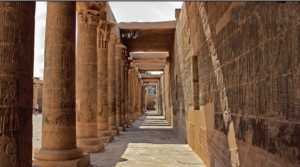
The eastern colonnade (right of the interior)
The Main Temple of the Goddess Isis
The original temple of the goddess Isis, as well as shrines for the goddess Hathor, exists. The construction of the temple began in the reign of King Nectanebo I of the 30th dynasty in 342 BC, then this temple was built in the reign of Ptolemy II in 285 BC and was completed in the reign of Ptolemy III, but many Ptolemies built in it and even in the Roman era. The most beautiful shrine in the temple is the kiosk of Emperor Trajan, 116 AD. In 577 AD, Emperor Theodosius converted the temple into a Christian church. In this temple, there is the last hieroglyphic writing in 394 AD, and the last demotic script in 452 AD. This temple was not closed until the reign of Emperor Justinian in 562 AD.
The Temple of the Goddess Isis Temple layout
The temple consists of the first pylon, and inside it there are two entrances: the main one is older than the pylon itself because it was built in the reign of King Nectanebo. The second entrance leads to the birth house (mammisi) which was built in the reign of Ptolemy III, then after that a colonnade, then the second pylon, then behind it is a hypostyle hall consisting of 10 columns, then we reach a hall with small rooms to its west, a staircase leading to the roof of the temple and there is the Osirian shrine, then after the hall, we reach the Holy of holies.
The First Pylon
Ptolemy V and VI completed the pylon. The pylon consists of two towers because the ancient Egyptians belief was that when the sun first rose, it was between two mountains of the horizon. This shape was used to revive the same idea, and that is why two towers were built in the pylon and a winged solar disk was drawn between them. Between the two towers is the entrance gate to the temple. There is a secondary entrance to the pylon that leads directly to the mammisi, and this was not repeated in any other temple. In front of the pylon, there are two statues of pink granite lions dating back to the Roman era. In front of the pylon, there were two obelisks from the era of Ptolemy VIII, but the obelisks were moved to Alexandria and then to London. The obelisk is very important because it contains a text in Greek and hieroglyphic writing.
The most important scenes on the pylon:
•The king in front of the goddess Hathor, but unfortunately, his face was defaced into the shape of a cross. •A scene of King Ptolemy XII (the Piper, father of Cleopatra) offering mirrors to Isis and Osiris, and also offering incense to Isis and Horus. •One of the most common scenes is the king killing enemies on the facade of the temple.
Ptolemy XII Killing Enemies Depicts the pharaoh as a victorious warrior.

The First Pylon of the Temple
Lions at the Entrance and Obelisk Fragments.
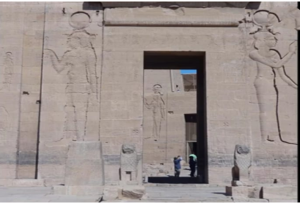
Secondary Entrance to the Mammisi
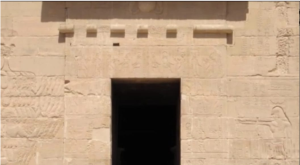
Obelisk in London One of the obelisks from Philae, now relocated to London.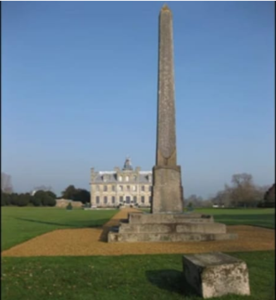
King Ptolemy in front of Hathor, but her face was distorted into the shape of a cros
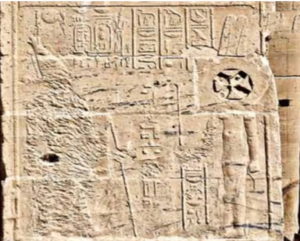
Nectanebo Offering sacrifices to goddess Sekhmet.

Ptolemy XII Offering Mirrors to Osiris and Isis
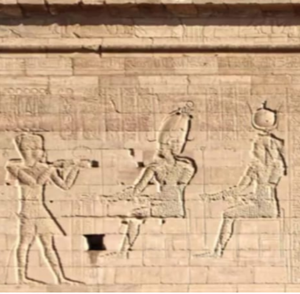
Ptolemy XII Wearing the Northern Crown and Offering a Menat Necklace.
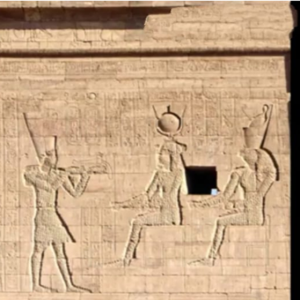
King Ptolemy wears a white crown and burns incense for Isis and Horus with a human face
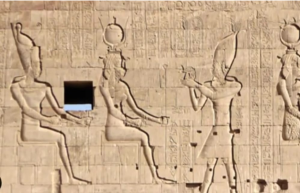
King Ptolemy presents the North and South crown to Horus with the head of a falcon, with Nephthys behind him
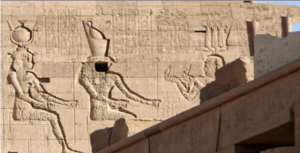
Isis, followed by Horus, and Hathor
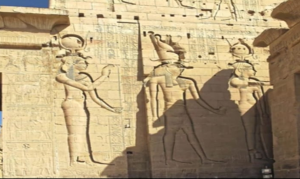
Hathor’s boat near Mammisi
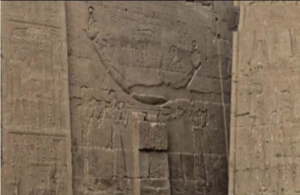
The Middle Courtyard
To the right of the courtyard, we find the eastern colonnade, which contains 10 columns with plant-based capitals. Behind the columns are 6 undecorated rooms, the most important of which is the first room, the temple’s chamber, and the last is the library room. To the north of the courtyard is the mammisi, which is an independent building.
General view of the eastern colonnade
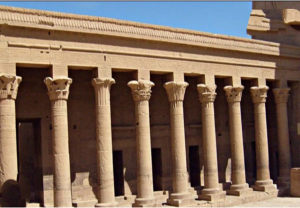
A lion carrying a sword is found at the end of the colonnade.
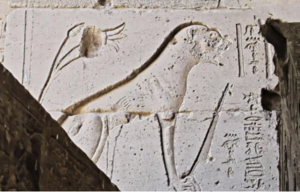
Ptolemy XII offers the symbol of eternity to Osiris and Isis.
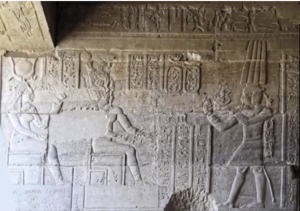
The sacred boat of the god Sokar in front of Osiris and Isis.
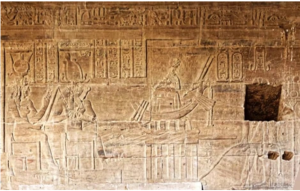
The mammisi (birth house)
Champollion was the first to give it this name, and it is a Coptic word composed of two parts: “ma” meaning place, and “mis” meaning birth. The annual celebrations for the birth of the god Horus were held there. This building was built by King Ptolemy VI. This mammisi is considered the most beautiful birth house in Egyptian civilization and is distinguished by its seven columns with Hathoric capitals. The most important scenes in it are the divine union between Osiris and Isis, and many other scenes that we will see in the following images.
The eastern side of the mammisi
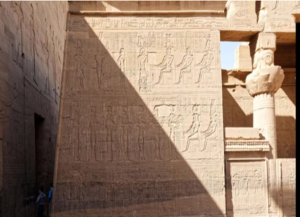
The Hathoric columns of the mammisi
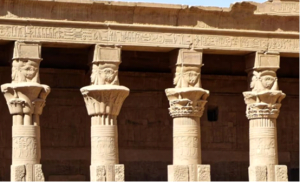
The entrance to the mammisi, on both sides of which is a scene of Ptolemy VI.

Nekhbet and Wadjet are on the roof of the mammisi to protect the entrance
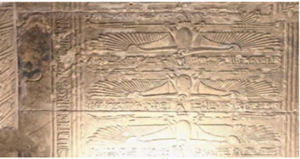
An image showing the divine union
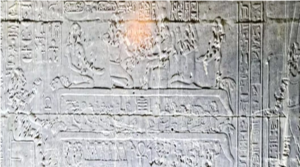
Amun gives the order to Khnum to shape the child Horus

Khnum shapes the child on the potter’s wheel

Presenting the child to the gods
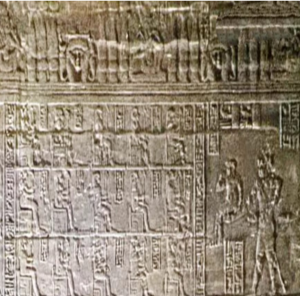
Scenes of the Holi of holies of the mammisi
The Holi of holies chamber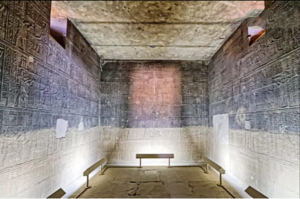
Horus in the forest wearing the double crown and behind him is the cobra announcing his birth
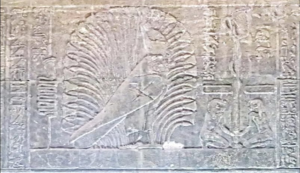
Isis breastfeeds Horus
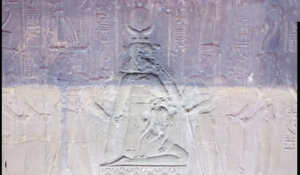
King Ptolemy and behind him Cleopatra III offer wine to Isis and Horus King Ptolemy offers linen to the gods Atum and Nut
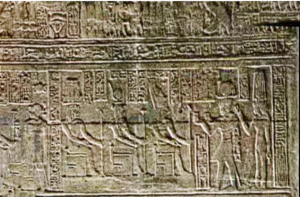
King Ptolemy offers linen to the gods Atum and Nut
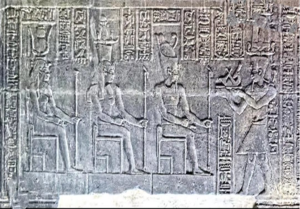
The Second Pylon
Smaller and older than the first pylon, it is located on the northern side of the middle courtyard and leads to the holi of holies. It is 32 meters wide and 12 meters high. In the middle of the pylon, there is a gate on top of a high rock, which is reached by large stairs. On the right side, we find a rock mass that is a decree from Ptolemy V in which he dedicates the entire area to the goddess Isis. The pylon is hollow inside and has places to place flags.
The most important scenes
on the pylon are those of King Ptolemy V offering sacrifices to various gods. We will list some of these scenes in the following images.
General view of the pylon
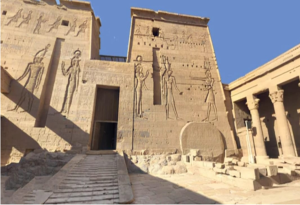
The block bearing the decree of Ptolemy V’s dedication to Isis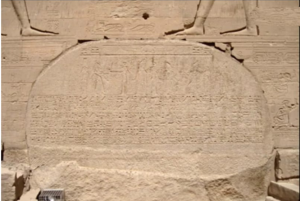
King Ptolemy V offers a scepter to Horus and Hathor
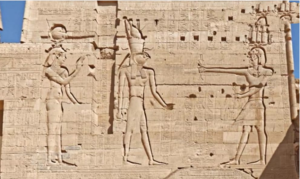
King Ptolemy V offers sacrifices to Osiris and Isis
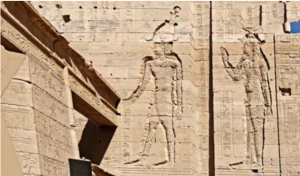
The Hall of Columns
A hall consisting of ten columns, with a door leading to the holi of holies and another door leading via a staircase to the roof. Its ceiling only covers half of the hall. In the 6th century AD, in the year 575, the building was converted into a church, and therefore many inscriptions in the form of crosses are found in the hall. The ankh symbol was also converted into a cross.
Columns in the hall
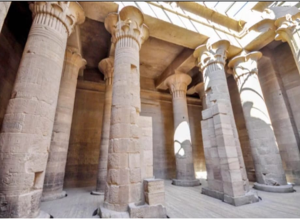
View of the sun boat on the lintel of the hall
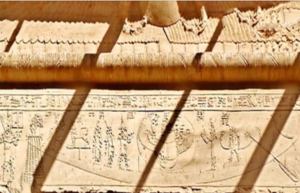
A shape of a cross carved in the hall
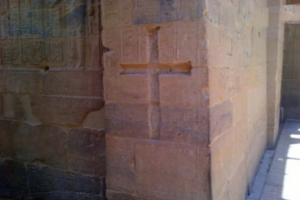
An altar with a carved cross
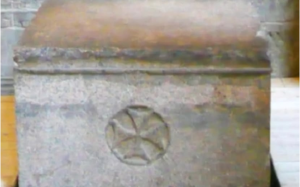
The foundation inscription of the church by Theodore
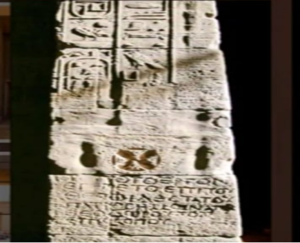
Ptolemy VIII and Cleopatra II offer fields to Isis
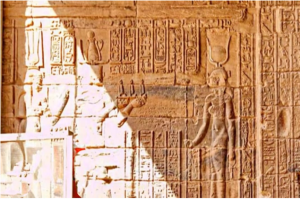
The king offers the Eye of Horus to Horus and Hathor
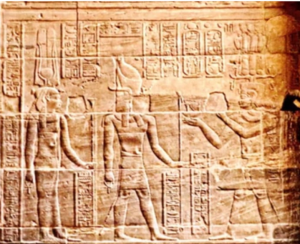
Holy of holies
The holy of holies is always the oldest building in the temple and was always dedicated to the sacred boat of the temple’s god. In the middle of the holy of holies is a red granite base that was dedicated to the goddess Isis. On the walls, there are scenes of the king offering various sacrifices to the goddesses Isis and Osiris. There is a beautiful scene of the goddess Isis breastfeeding the god Horus.
The stone block in the holy of holies
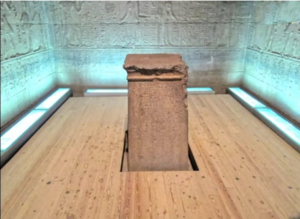
Ptolemy II offers the Eye of Horus to Isis and Anuket
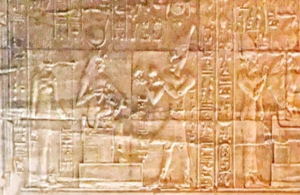
The king offers sistrums and necklaces to Isis and Nephthys
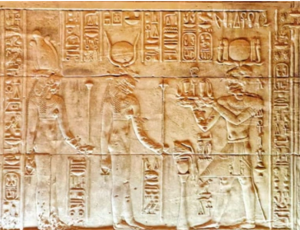
The king offers sacrifices to Isis while she breastfeeds Horus
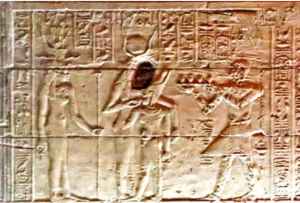
The king offers an offering in the form of a gazelle’s head to Osiris and Isis, with Isis protecting Osiris with her wings
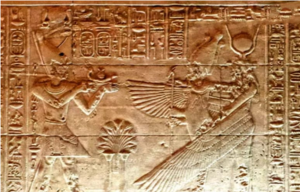
Buildings Surrounding the Temple of Isis
1.Hadrian’s Gateway, Hadrian is one of the most famous Roman emperors who visited Egypt and loved building forts to secure the country’s borders, is considered to be the builder of this gateway. This gateway was used for the goddess Isis to exit her temple and go to the island of Philae to visit the tomb of her husband, the god Osiris, once every ten days. On the gateway, there is a text from Emperor Hadrian prohibiting hunting in the area.
A general view of the gateway
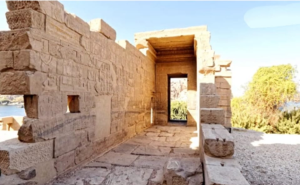
Emperor Hadrian pouring liquids for Osiris and Isis sitting on the throne behind them is Horus
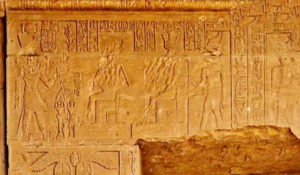
The djed pillar (Osiris’s spinal column) depicted on the gateway
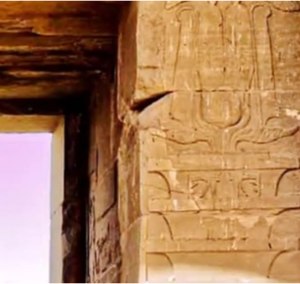
Hapi, wearing a papyrus crown, represented in his cave on Bigeh Island
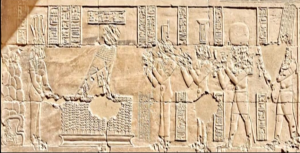
Thoth writes Hadrian’s decree
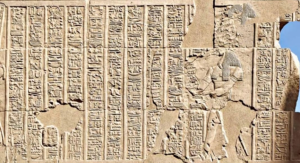
Transporting Osiris’s body on the back of a crocodile
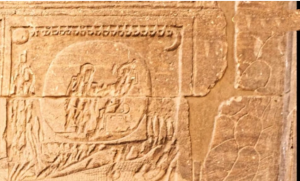
2.The Small Temple of Hathor
Its construction began under Ptolemy VI and was rebuilt during the reign of Emperor Augustus. The temple was built for the goddess Hathor, but in her Greek form (Aphrodite) in the Greek era, and in the Roman era in the form of the goddess Venus. The temple consists of a hall with six columns and a number of chambers. This place is considered like a music hall, and for this reason, the god Bes is drawn playing musical instruments, as he is the god of happiness. Also, there are images of a musician playing the flute, as well as scenes of offering sacrifices of wine
A general view of the temple

The god Bes playing a musical instrument
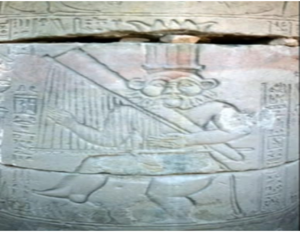
musician playing the flute
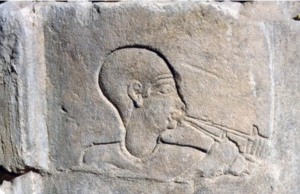
Augustus offers flowers to Nephthys
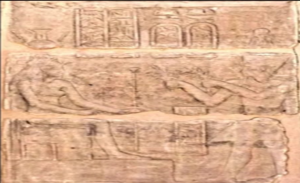
The emperor offers wine to Hathor, and to the north, a monkey plays a stringed instrument
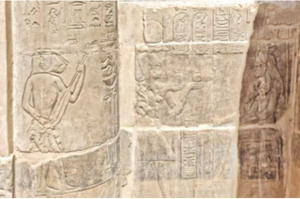
The eternal god kneeling on the nub (a symbol of gold)
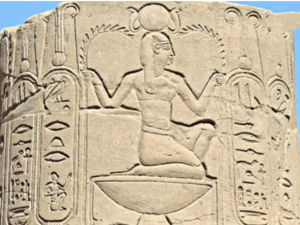
3.Trajan’s Kiosk
It is considered a symbol of Philae Island due to the great beauty of its columns. It is also called Pharaoh’s Bed because it has no roof. It was built during the reign of Emperor Hadrian but was dedicated to his adoptive father, Emperor Trajan. It consists of fourteen columns decorated with composite capitals. The most important scenes on the walls are Emperor Trajan offering sacrifices to Isis and her son Horus.
General view of the kiosk of Trajan
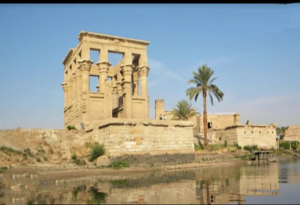
Shape of the columns in the Kiosk
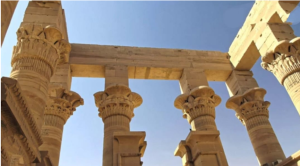
Trajan offering wine to Isis and Horus
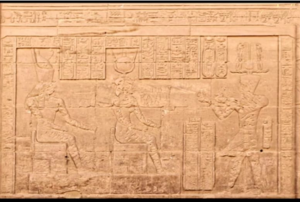
Trajan burning incense and pouring wine to Osiris and Isis
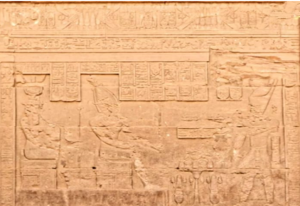
The Temple of Arsinoe
The name “Arsinoe” is derived from the Greek goddess Arsinoe, often associated with the Egyptian goddess Isis. The temple was built during the Ptolemaic period, with construction starting under Ptolemy IV and completed by Ptolemy V. The temple is relatively small, consisting of an entrance hall, a hypostyle hall, and a Holy of holies. The Holy of holies houses a granite altar. The temple’s walls are adorned with scenes depicting various deities and pharaohs. These include: •Ptolemy IV offering sacrifices to the gods •Emperor Tiberius offering scruffiness to gods especially Isis
General View of the Temple of Arsinoe
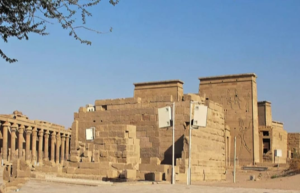
The Eye of Horus symbol on the altar
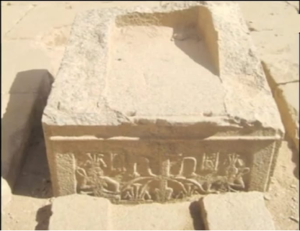
Emperor Tiberius in the presence of Arsinoe
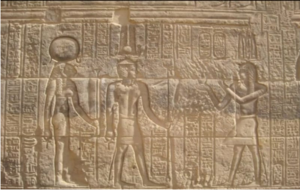
Ptolemy IV offering sacrifices to Isis
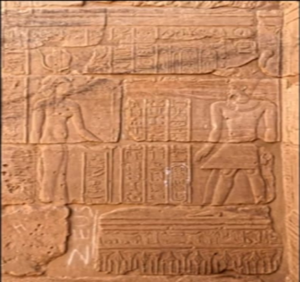
Tiberius offering a necklace to Isis
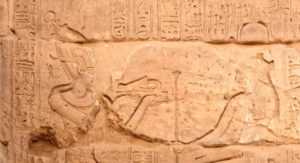
Tiberius offering a necklace to the goddess Sekhmet
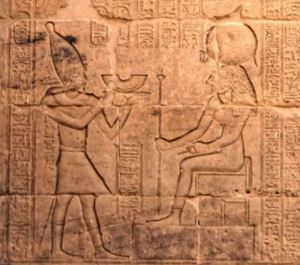
5-The Temple of Imhotep
Constructed by Ptolemy V in celebration of the birth of his son, Ptolemy VI, the Temple of Imhotep holds significant historical and religious importance. Imhotep, who served as the vizier to King Djoser during the Old Kingdom, is renowned for designing the Step Pyramid. Over time, Imhotep was deified and became associated with healing, often equated with the Greek god of medicine, Asclepius. Originally, the temple consisted of a forecourt and two chambers. However, during the Coptic era, it was converted into a place of Christian worship.
A general view of the Temple of Imhotep.
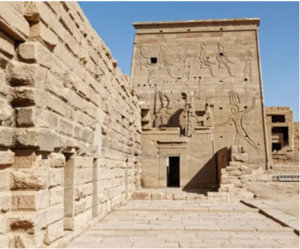
King Ptolemy V standing before Isis.
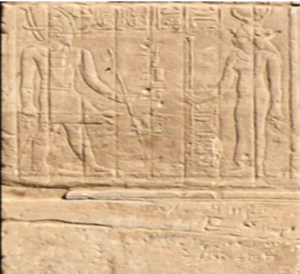
King Ptolemy V offering natron’s salt to Imhotep seated on a throne.

1-Ptolemy II’s Gateway
Located between the Temple of Imhotep and the first pylon of the Temple of Isis, this gateway was constructed by King Ptolemy II, the founder of the entire temple complex. In ancient times, it served as a processional route for the sacred boat of the goddess Isis during religious ceremonies.
The winged sun disk for protection.
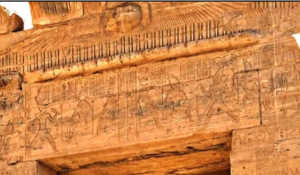
A view of the lions guarding the temple.
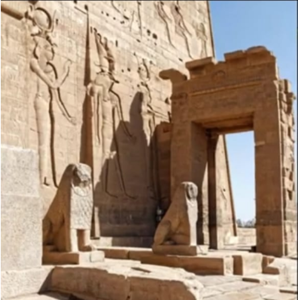
King Ptolemy II offering maat to Horus and wine to Osiris and Isis
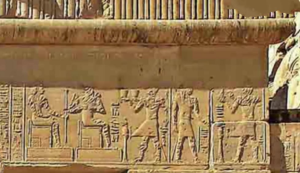
King Ptolemy II burning incense to Hathor and Nut.
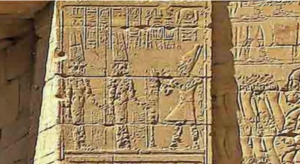
King Ptolemy II offering fields to Isis and Arsinoe II (wife of Ptolemy II)
